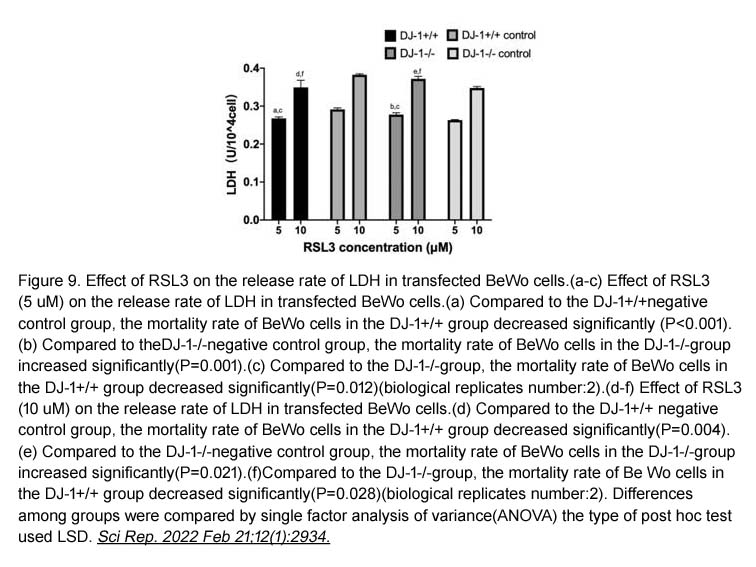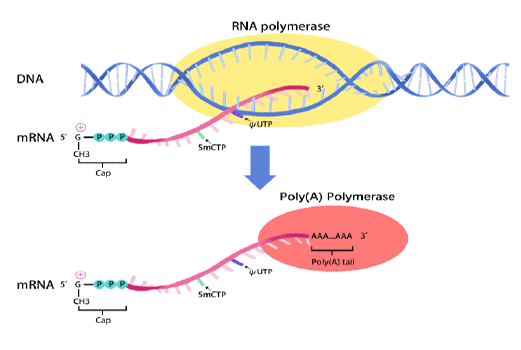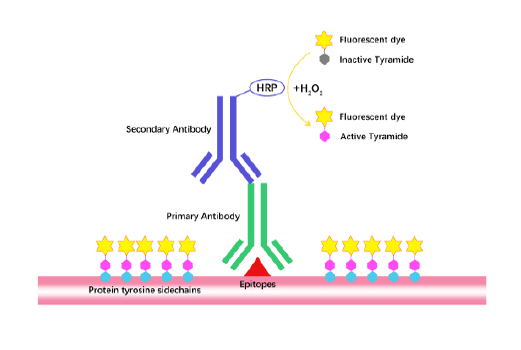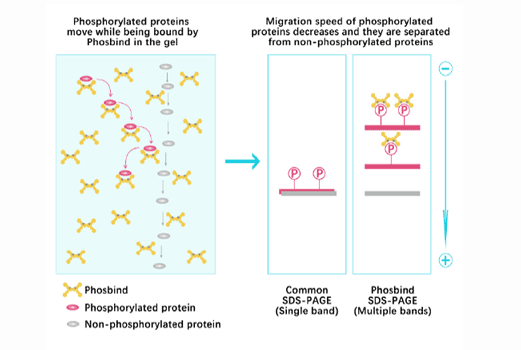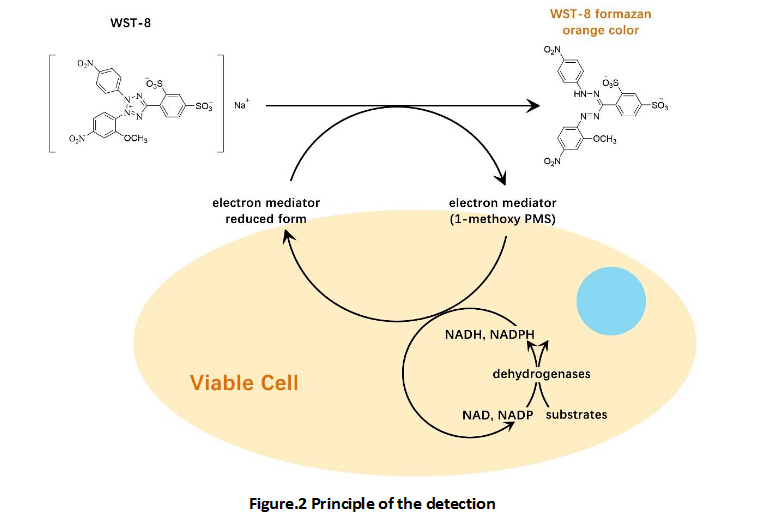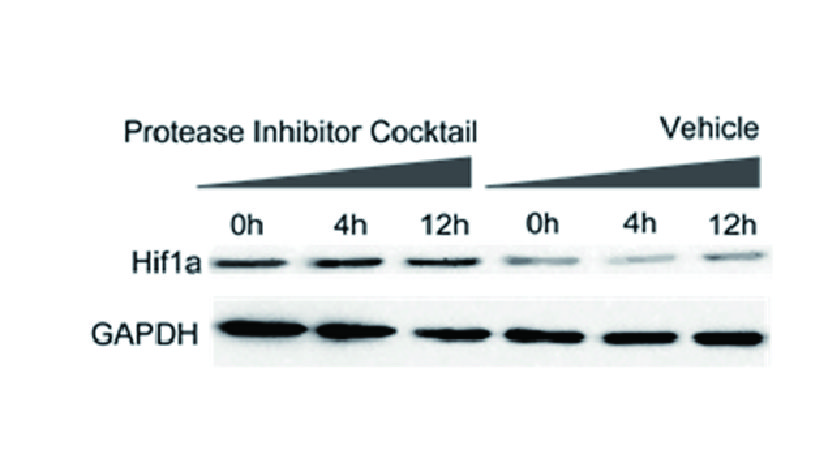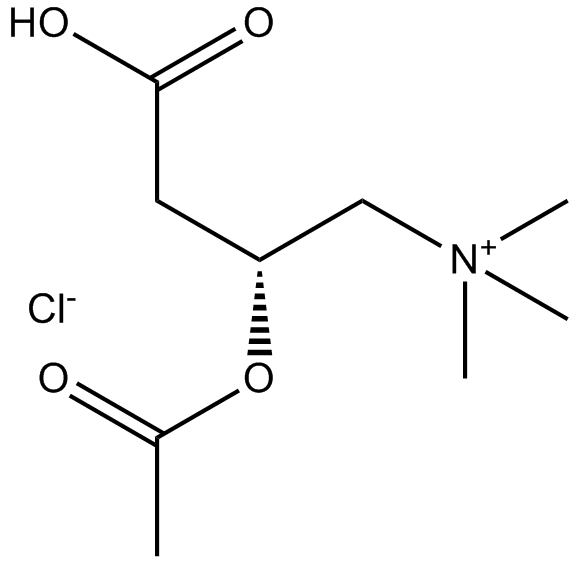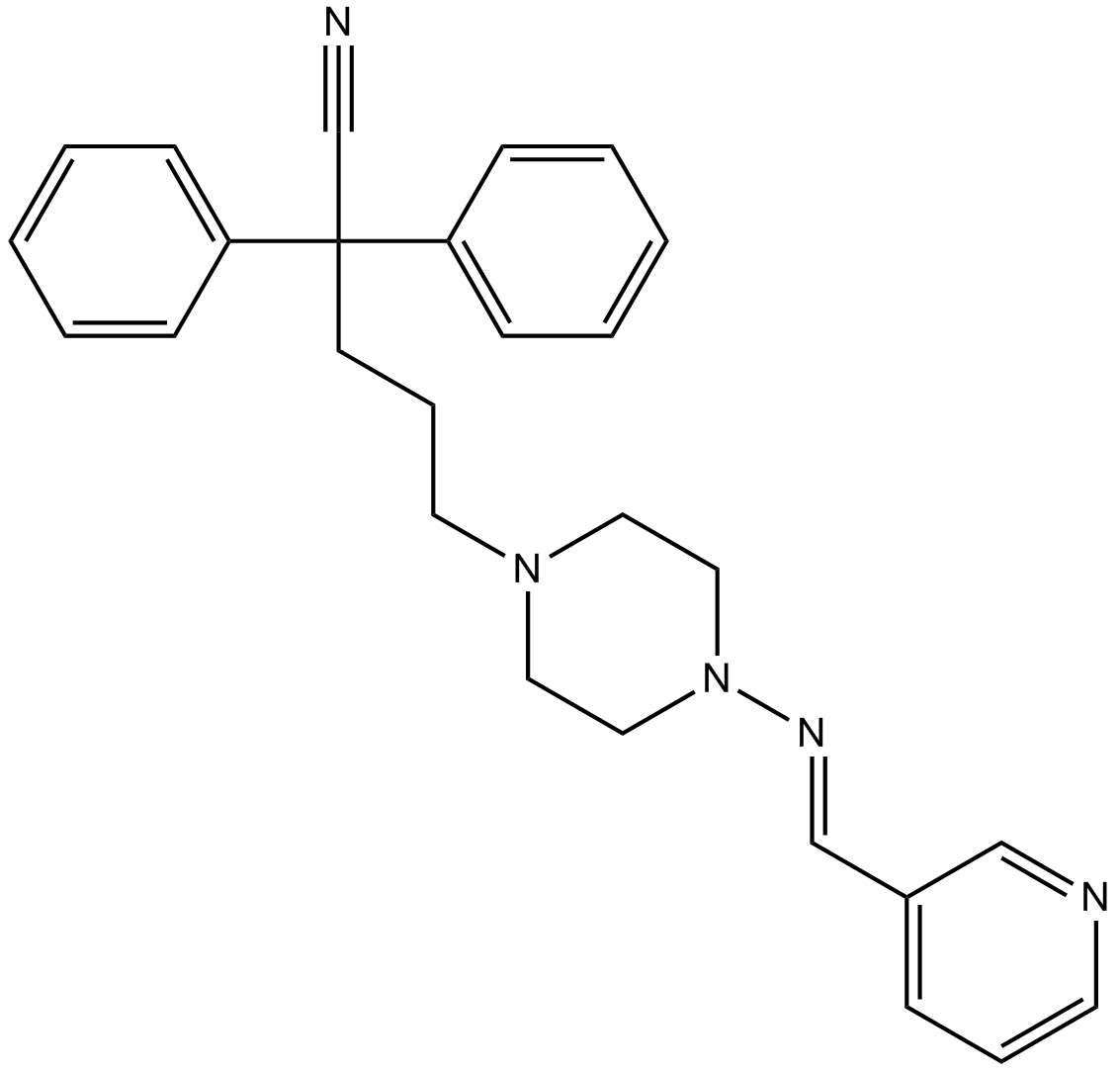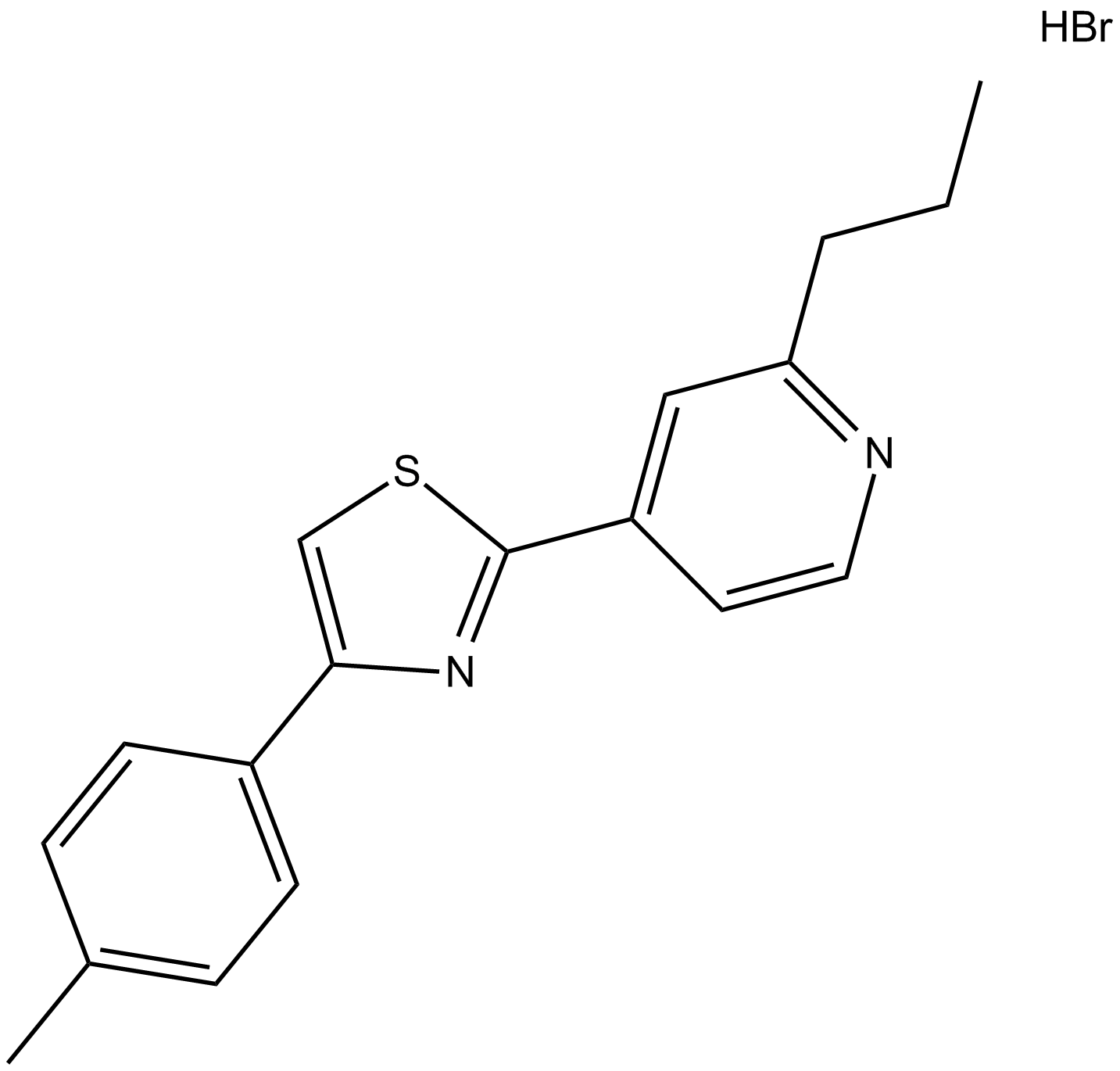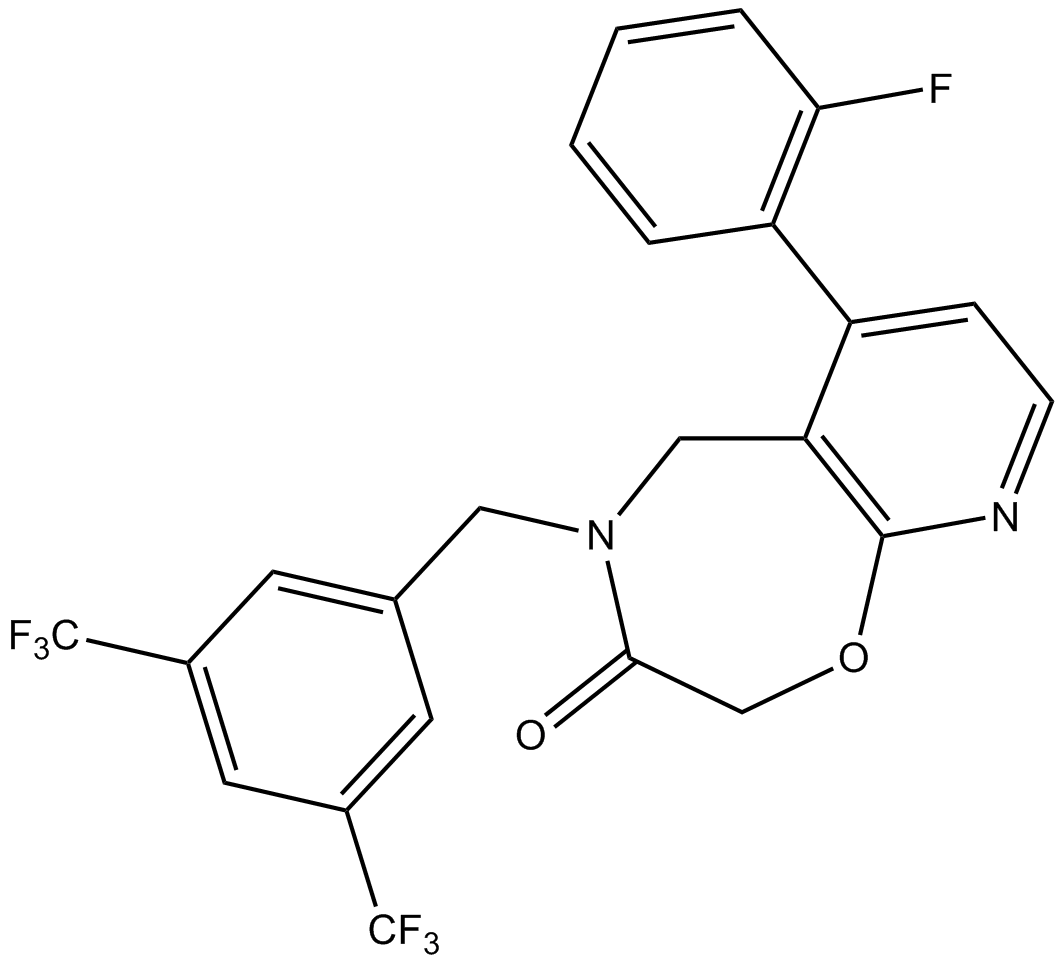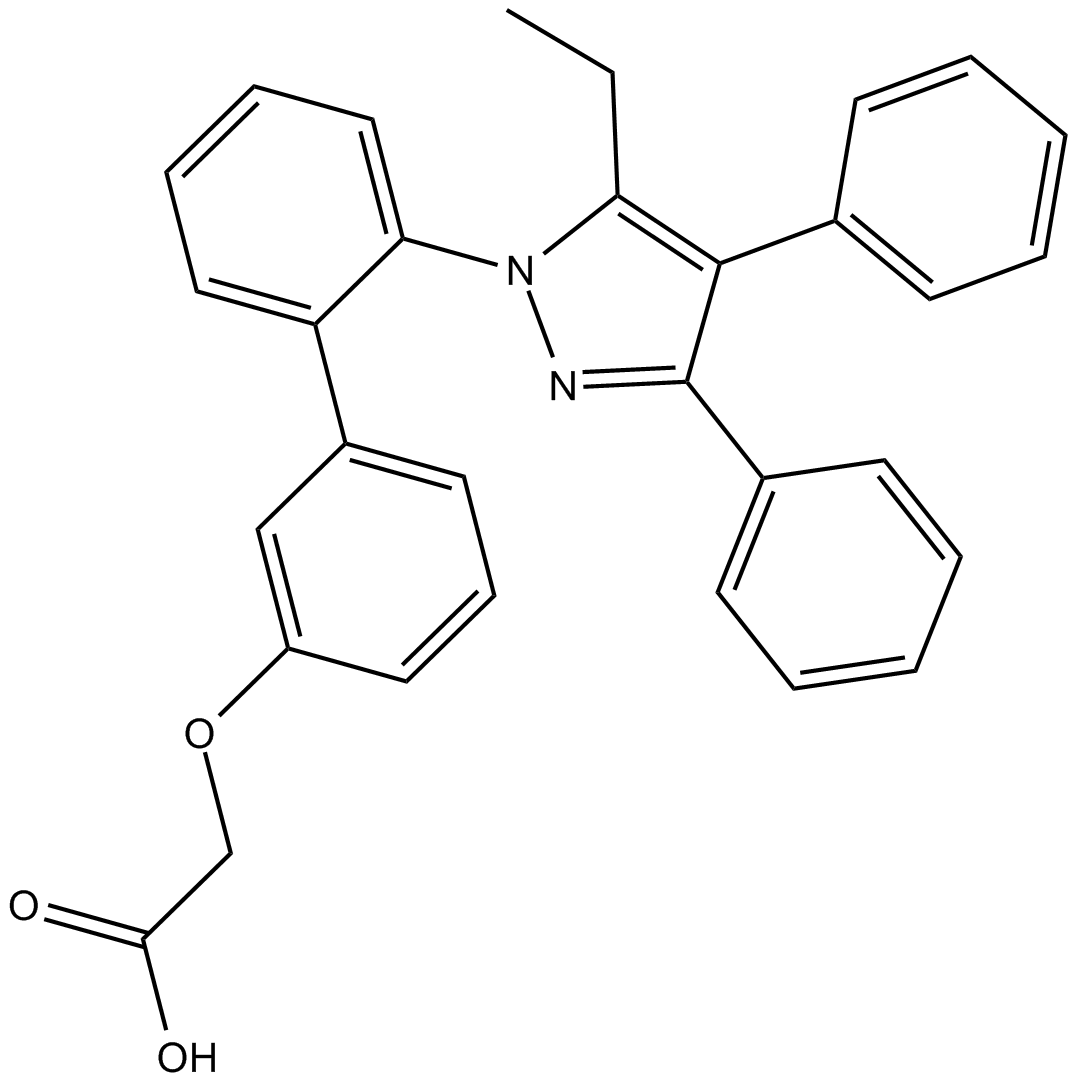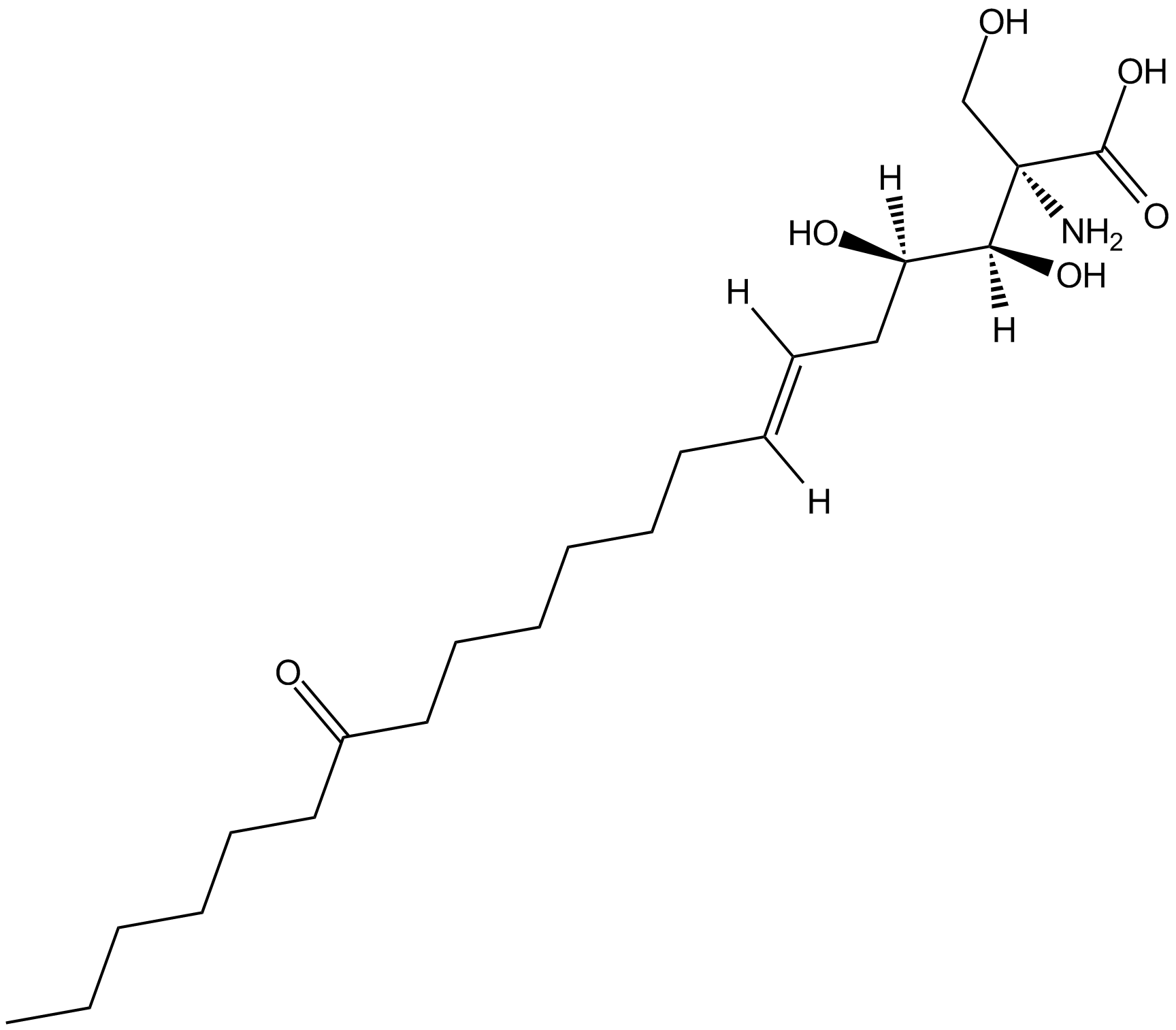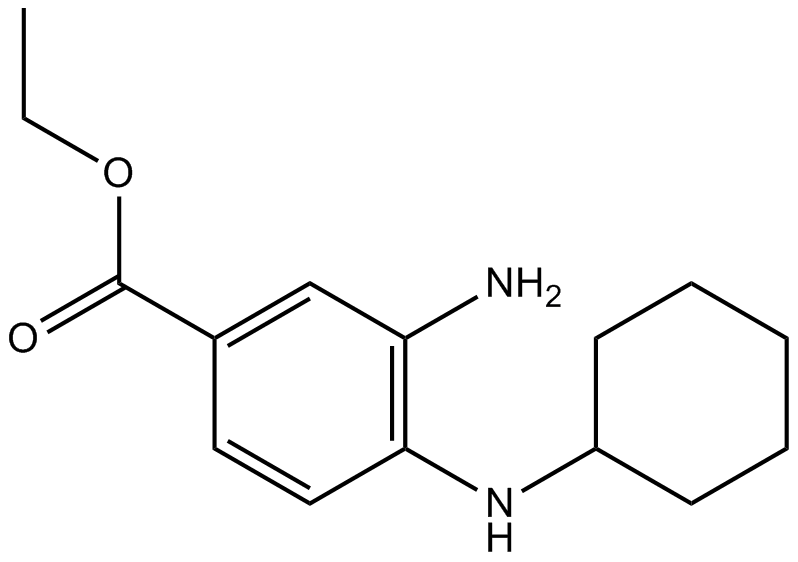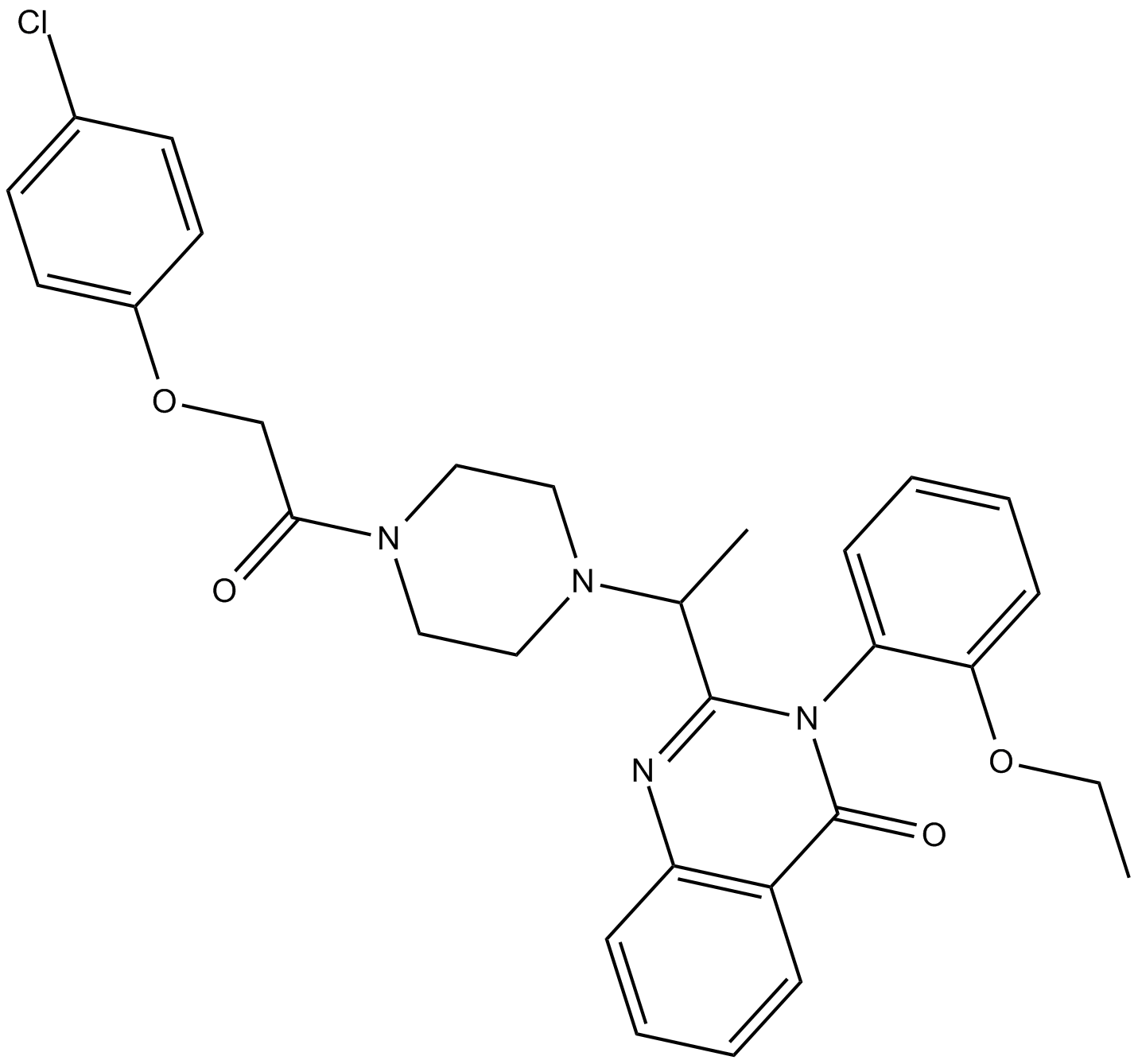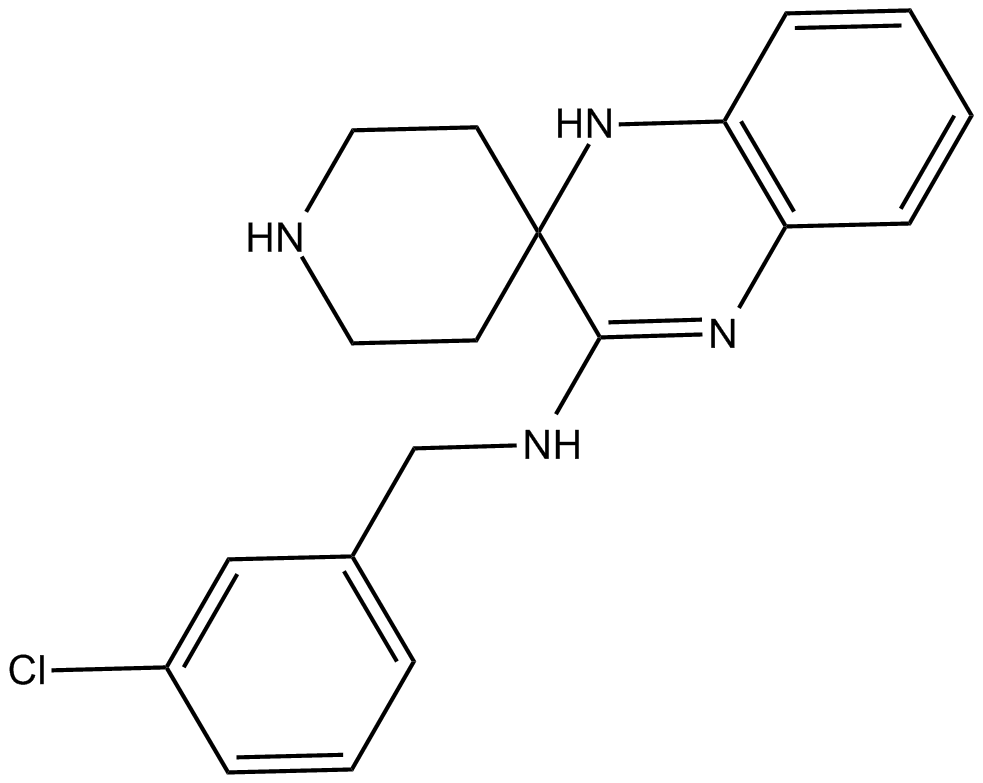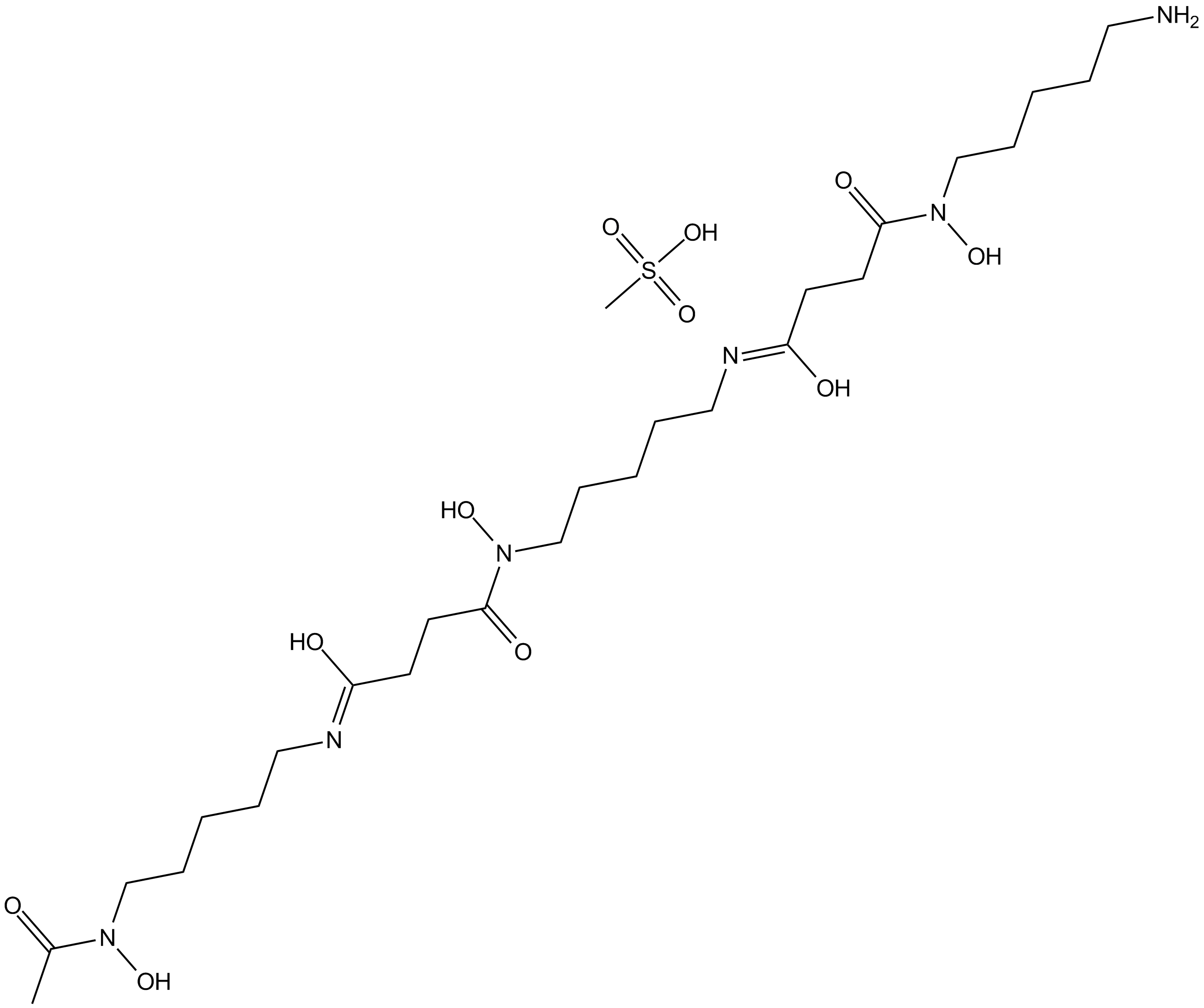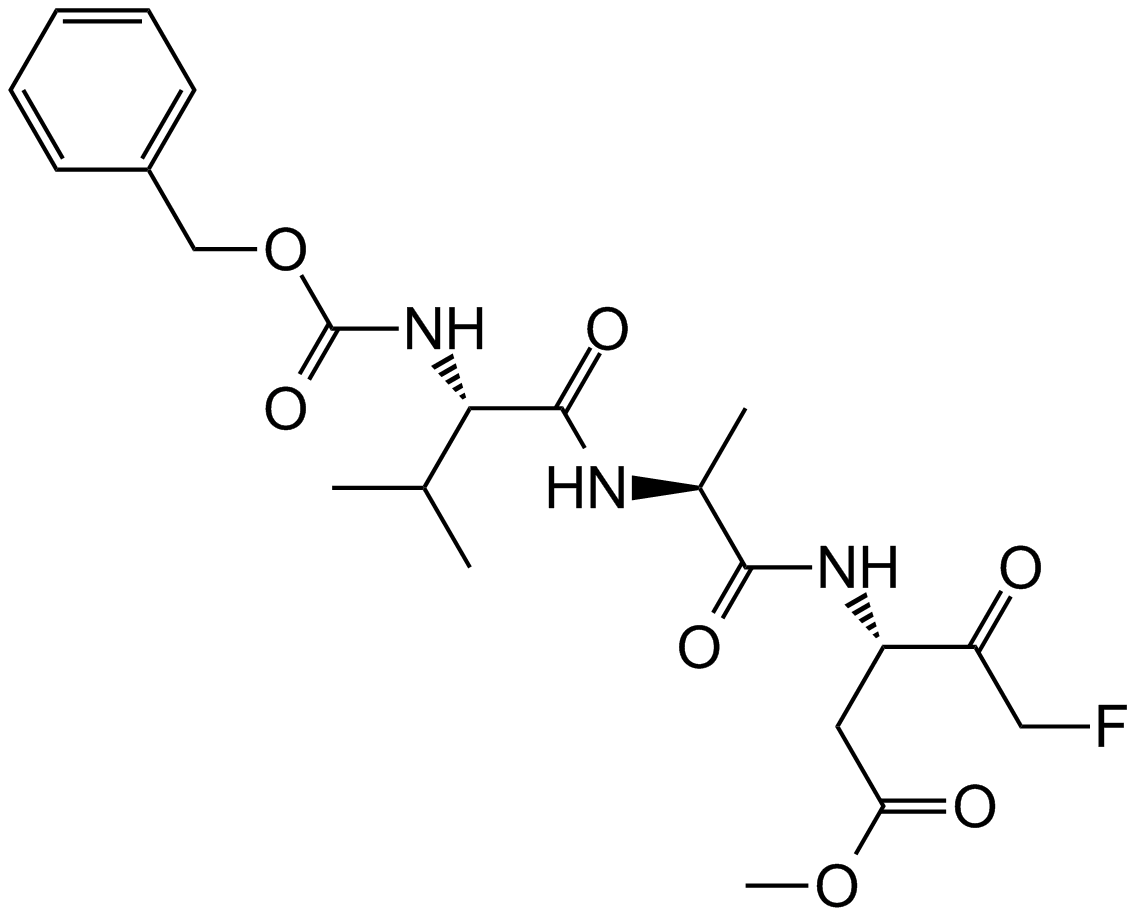RSL3
IC50: 100 nM
RSL3 (1S,3R-) is the inhibitor of the glutathione peroxidase 4.
Maintaining cellular redox balance is critical for cell survival and tissue homoeostasis since imbalanced production of reactive oxygen species results in oxidative stress and cell death. The antioxidant enzyme glutathione peroxidase 4 is a important regulator of oxidative stress–induced cell death.
In vitro: RSL3, which was a glutathione peroxidase (GPX) 4 inhibitor, had been cooperated with the Smac mimetic BV6 to induce reactive oxygen species (ROS)-dependent cell death in acute lymphoblastic leukemia cells. It was found that addition of the caspase inhibitor failed to rescue ROS-induced cell death, suggesting that RSL3-induced cell death occured in a caspase-independent manner. Moreover, the iron chelator Deferoxamine inhibited RSL3/BV6-induced cell death significantly, however, it could not rescue cell death by Erastin/BV6, indicating that RSL3/BV6-, but not Erastin/BV6-mediated cell death depended on iron. In addition, it was shown that ROS production was required for both RSL3/BV6- and Erastin/BV6-induced cell death. In contrast, genetic or pharmacological inhibition of lipid peroxidation by GPX4 overexpression significantly decreased RSL3/BV6-induced cell death. Of importance, inhibition of lipid peroxidation could protect from RSL3/BV6-stimulated ROS production [1].
In vivo: Currently, there is no animal in vivo data reported.
Clinical trial: Up to now, RSL3 is still in the preclinical development stage.
Reference:
[1] Dchert J,Schoeneberger H,Rohde K,Fulda S. RSL3 and Erastin differentially regulate redox signaling to promote Smac mimetic-induced cell death. Oncotarget.2016 Aug 29. doi: 10.18632/oncotarget.11687.
- 1. Xiaokun Liu, Yuxuan Yang, et al. "Flubendazole inhibits cervical carcinoma by targeting DHODH to induce ferroptosis and mitophagy." Biochem Pharmacol. 2025 Aug 28;242(Pt 1):117287. PMID: 40885318
- 2. Nicholas W Harper, Gavin A Birdsall, et al. "RNA Pol II inhibition activates cell death independently from the loss of transcription." Cell. 2025 Aug 14:S0092-8674(25)00856-6. PMID: 40818455
- 3. Mengyun Yang, Ze Yu, et al. "Targeting lipid scrambling potentiates ferroptosis and triggers tumor immune rejection." Sci Adv. 2025 Aug 15;11(33):eadx6587. PMID: 40815641
- 4. Yan Tao, Jinhao Zang, et al. "Obesity-associated macrophages dictate adipose stem cell ferroptosis and visceral fat dysfunction by propagating mitochondrial fragmentation." Nat Commun 16, 7564 14 August(2025).
- 5. Nicholas W. Harper, Gavin A. Birdsall, et al. "Pol II degradation activates cell death independently from the loss of transcription." bioRxiv. 2025 Jan 14:2024.12.09.627542. PMID: 39713309
- 6. Yuanyuan Li, Pingjun Chang, et al. "TiO2-Nanoparticle–Enhanced Sonodynamic Therapy for Prevention of Posterior Capsular Opacification and Ferroptosis Exploration of Its Mechanism." Invest Ophthalmol Vis Sci. 2024 Oct 1;65(12):24. PMID: 39417751
- 7. Sae-Fung, A., Vinayavekhin, N., Fadeel, B., et al. "ACSL3 is an unfavorable prognostic marker in cholangiocarcinoma patients and confers ferroptosis resistance in cholangiocarcinoma cells." npj Precis. Onc. 8, 284 (2024).
- 8. Bingxi Lei, et al. "Depletion of the N6-Methyladenosine (m6A) reader protein IGF2BP3 induces ferroptosis in glioma by modulating the expression of GPX4." Cell Death Dis. 2024 Mar 1;15(3):181. PMID: 38429265
- 9. Hao Zheng, Jinming Liu, et al. "Targeted activation of ferroptosis in colorectal cancer via LGR4 targeting overcomes acquired drug resistance." Nat Cancer. 2024 Jan 30. PMID: 38291304
- 10. Qianping Zhang, Tiantian Sun, et al. "PAFAH2 suppresses synchronized ferroptosis to ameliorate acute kidney injury." Nat Chem Biol. 2024 Jan 29. PMID: 38287154
- 11. Krishan Kumar Saini, Priyank Chaturvedi, et al. "Loss of PERK function promotes ferroptosis by downregulating SLC7A11 (System Xc⁻) in colorectal cancer." Redox Biol. 2023 Sep;65:102833. PMID: 37536085
- 12. Yihui Gong, Zijun Liu, et al. "AGER1 deficiency-triggered ferroptosis drives fibrosis progression in nonalcoholic steatohepatitis with type 2 diabetes mellitus." Cell Death Discov. 2023 Jun 6;9(1):178. PMID: 37280194
- 13. Dong S, Zheng L, et al. "Loss of Lactate/Proton Monocarboxylate Transporter 4 Induces Ferroptosis via the AMPK/ACC Pathway and Inhibition of Autophagy on Human Bladder Cancer 5637 Cell Line" J Oncol 2023;2023 PMID: 36718218
- 14. Schwartz, Hannah, et al. "In vitro Methods to Better Evaluate Drug Responses in Cancer." UMass Chan Medical School. September 8, 2022.
- 15. Tingting Liao, Xia Xu, et al. "DJ-1 upregulates the Nrf2/GPX4 signal pathway to inhibit trophoblast ferroptosis in the pathogenesis of preeclampsia." Sci Rep. 2022 Feb 21;12(1):2934. PMID: 35190654
- 16. Xinxin Ren, Xiang Wang, et al. "Integrative bioinformatics and experimental analysis revealed TEAD as novel prognostic target for hepatocellular carcinoma and its roles in ferroptosis regulation." Aging (Albany NY). 2022 Jan 25;14(2):961-974. PMID: 35077390
- 17. Zongbo Wei, Caili Hao, et al. "Aging lens epithelium is susceptible to ferroptosis." Free Radic Biol Med. 2021 May 1;167:94-108. PMID: 33722625
- 18. Xinzhi Yang, Jiangang Liu, et al. "miR-18a promotes glioblastoma development by down-regulating ALOXE3-mediated ferroptotic and anti-migration activities." Oncogenesis. 2021 Feb 12;10(2):15. PMID: 33579899
- 19. Ali Ghoochani, En-Chi Hsu, et al. "Ferroptosis inducers are a novel therapeutic approach for advanced prostate cancer." Cancer Res. 2021 Mar 15;81(6):1583-1594. PMID: 33483372
- 20. Tong Zhang, Christin Bauer, et al. "Polyamine pathway activity promotes cysteine essentiality in cancer cells." Nature Metabolism (2020);03 August 2020. PMID: 32747794
- 21. Chu B, Kon N, et al. "ALOX12 is required for p53-mediated tumour suppression through a distinct ferroptosis pathway." Nat Cell Biol. 2019 May;21(5):579-591. PMID: 30962574
| Physical Appearance | A solid |
| Storage | Store at -20°C |
| M.Wt | 440.88 |
| Cas No. | 1219810-16-8 |
| Formula | C23H21ClN2O5 |
| Solubility | insoluble in H2O; insoluble in EtOH; ≥125.4 mg/mL in DMSO |
| Chemical Name | (1S,3R)-methyl 2-(2-chloroacetyl)-1-(4-(methoxycarbonyl)phenyl)-2,3,4,9-tetrahydro-1H-pyrido[3,4-b]indole-3-carboxylate |
| SDF | Download SDF |
| Canonical SMILES | COC([C@@H](Cc1c([C@@H]2c(cc3)ccc3C(OC)=O)[nH]c3ccccc13)N2C(CCl)=O)=O |
| Shipping Condition | Small Molecules with Blue Ice, Modified Nucleotides with Dry Ice. |
| General tips | We do not recommend long-term storage for the solution, please use it up soon. |
| Cell experiment [1]: | |
|
Cell lines |
BJ-TERT/LT/ST/RASV12 and DRD cells |
|
Preparation method |
Soluble in DMSO. General tips for obtaining a higher concentration: Please warm the tube at 37°C for 10 minutes and/or shake it in the ultrasonic bath for a while. Stock solution can be stored below -20°C for several months. |
|
Reacting condition |
5 μg/mL, 2 days |
|
Applications |
RSL3 displayed synthetic lethality with oncogenic RAS in both BJ-TERT/LT/ST/RASV12 and DRD cells. RSL3 inhibited the growth of BJ-TERT/LT/ST/RASV12 and DRD cells as low as 10 ng/mL and started to kill sensitive cells as early as 8 hr after treatment. Longer treatment with RSL3 had little effect on the viability of cells lacking oncogenic RAS. RSL3 induced rapid and nonapoptotic cell death in oncogenic ras containing tumorigenic cells. |
| Animal experiment [2]: | |
|
Animal models |
Athymic nude mice xenografted with BJeLR cells |
|
Dosage form |
Subcutaneous injection (s.c.), 100 mg/kg, twice each week for 2 weeks. |
|
Application |
RSL3 prevented tumor growth in a xenograft model. (1S, 3R)-RSL3 significantly prevented tumor growth. (1S, 3R)-RSL3 significantly reduced tumor volume via the induction of ferroptosis. Intraperitoneal injection of (1S, 3R)-RSL3 showed no toxicity up to 400 mg/kg dose, which suggested that (1S, 3R)-RSL3 was well tolerated. |
|
Other notes |
Please test the solubility of all compounds indoor, and the actual solubility may slightly differ with the theoretical value. This is caused by an experimental system error and it is normal. |
|
References: [1]. Yang W S, Stockwell B R. Synthetic lethal screening identifies compounds activating iron-dependent, nonapoptotic cell death in oncogenic-RAS-harboring cancer cells[J]. Chemistry & biology, 2008, 15(3): 234-245. [2]. Yang W S, SriRamaratnam R, Welsch M E, et al. Regulation of ferroptotic cancer cell death by GPX4[J]. Cell, 2014, 156(1): 317-331. |
|
Quality Control & MSDS
- View current batch:
Chemical structure
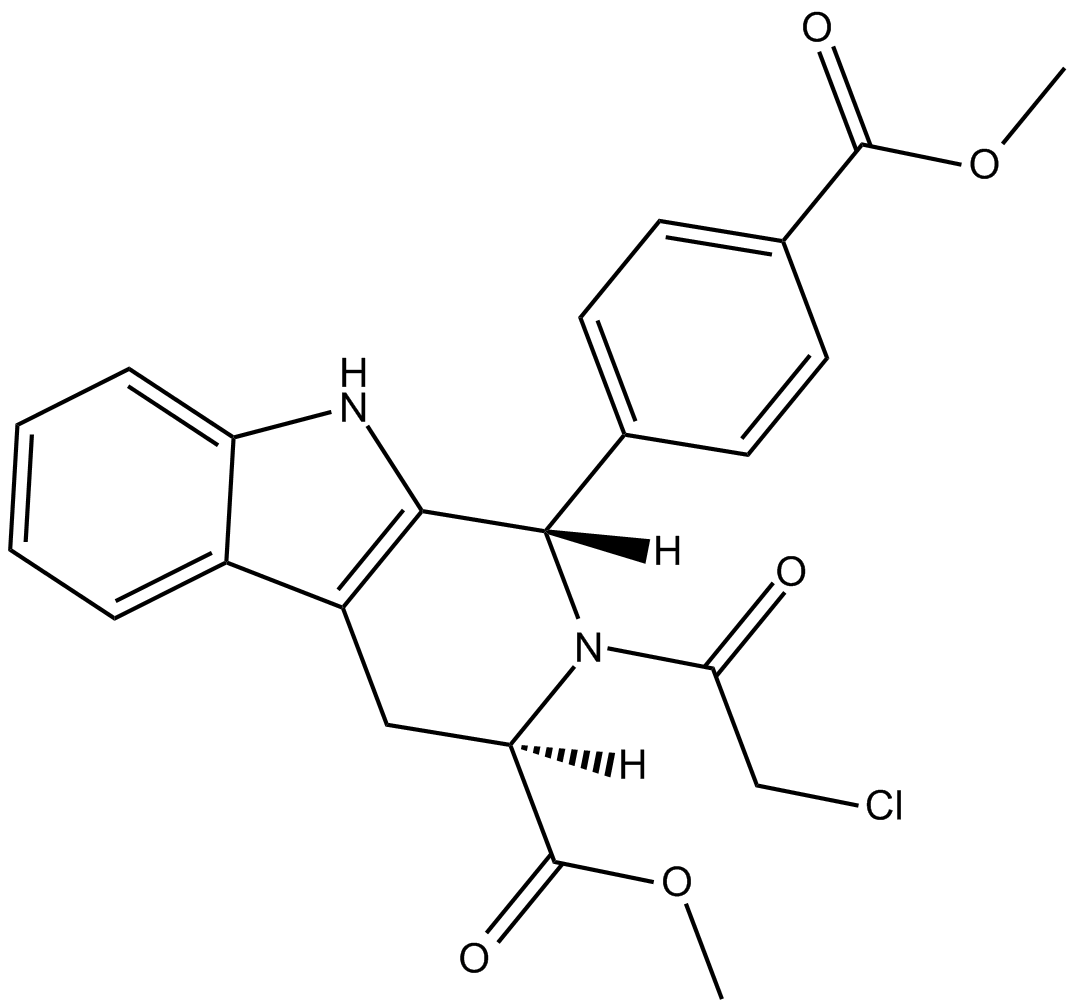
Related Biological Data
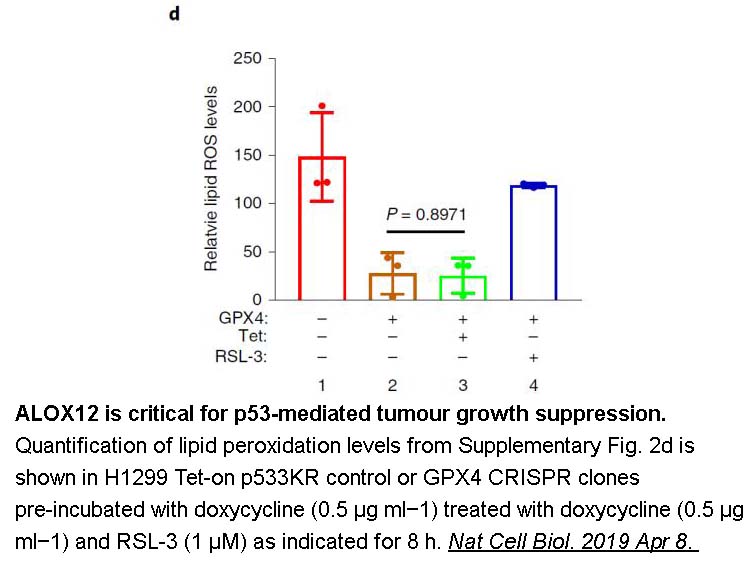
Related Biological Data
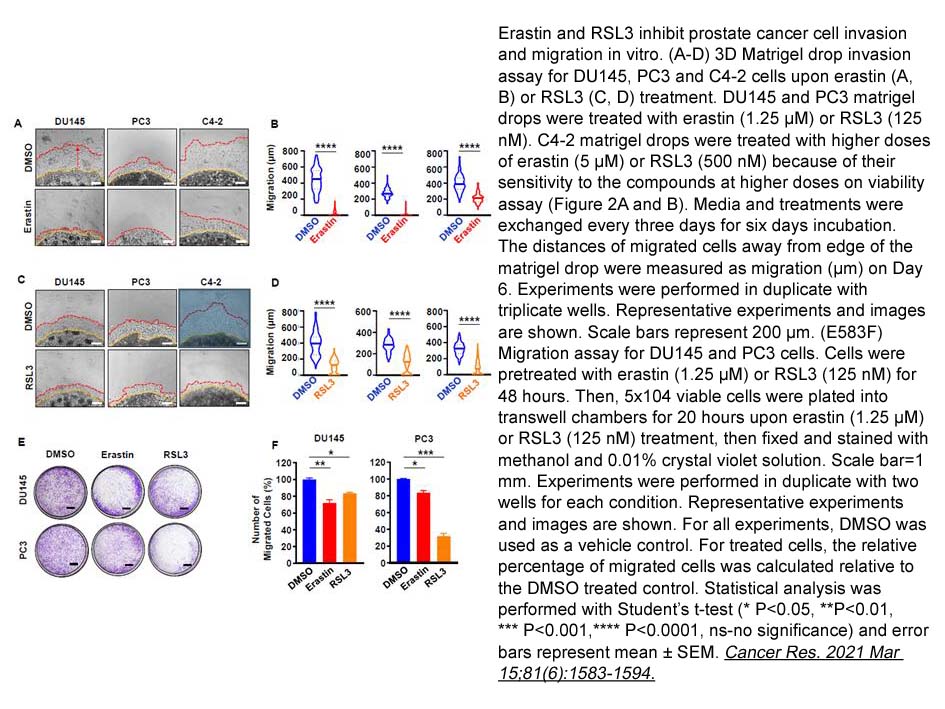
Related Biological Data
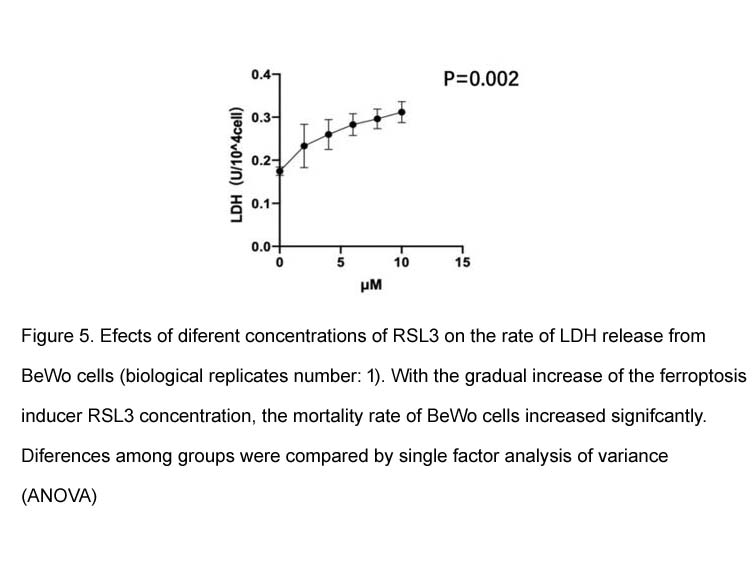
Related Biological Data
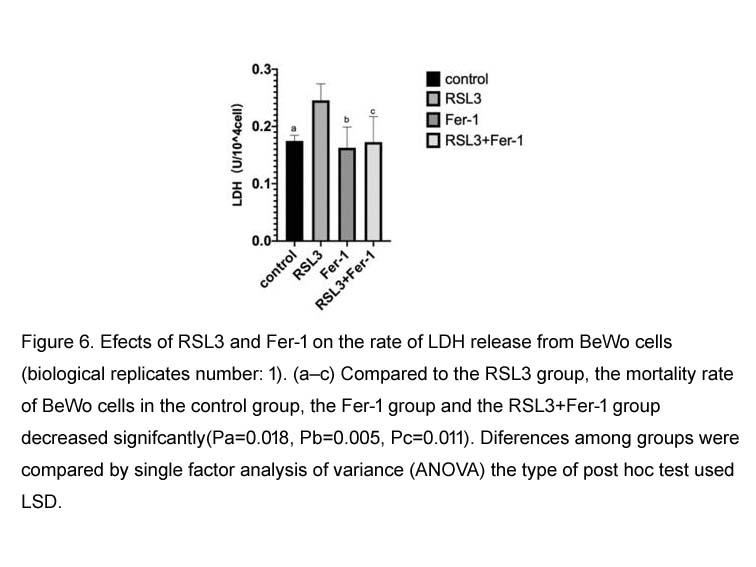
Related Biological Data
